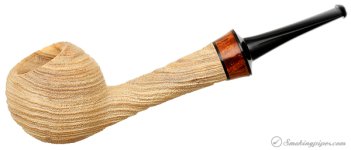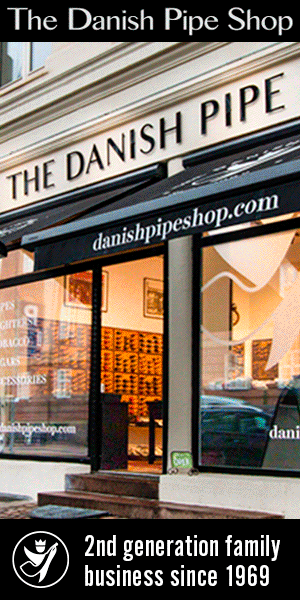It makes for great kitchen and coffee utensils (I'm a sucker for the Hario olive wood line). As for pipes, I've never been able to bring myself to buy one. I'm just pretty set on briar. If I stray from briar it's to Strawberry wood. Maybe one day I'll try a morta. But olive wood just doesn't get me too excited personally.
Opinions on Olive Wood
- Thread starter bluegrassbrian
- Start date
You are using an out of date browser. It may not display this or other websites correctly.
You should upgrade or use an alternative browser.
You should upgrade or use an alternative browser.
SmokingPipes.com Updates
Watch for Updates Twice a Week
I've done morta (a Ryan Alden actually) and it was good.It makes for great kitchen and coffee utensils (I'm a sucker for the Hario olive wood line). As for pipes, I've never been able to bring myself to buy one. I'm just pretty set on briar. If I stray from briar it's to Strawberry wood. Maybe one day I'll try a morta. But olive wood just doesn't get me too excited personally.
I've seen olive wood pipes over the years that looked nice but weren't a complete enough package for me to pull the trigger.
I've found one that's a good price and hits the right notes for me.
How was the morta experience? Sounds like you should give the olive wood a shot! I haven’t tried either of those mediums, but like you, have many a time been tempted.I've done morta (a Ryan Alden actually) and it was good.
I've seen olive wood pipes over the years that looked nice but weren't a complete enough package for me to pull the trigger.
I've found one that's a good price and hits the right notes for me.
Il Duca makes a really nice Olivewood pipe, and his sandblast on that medium is excellent.I've done morta (a Ryan Alden actually) and it was good.
I've seen olive wood pipes over the years that looked nice but weren't a complete enough package for me to pull the trigger.
I've found one that's a good price and hits the right notes for me.

Well yeah I'm a big Duca fan.Il Duca makes a really nice Olivewood pipe, and his sandblast on that medium is excellent.View attachment 251326
If I end up getting the one I'm considering I'll post it here.
It's another Italiano..
While I have no personal handling, nor experience with olivewood pipes, they seem to be listed at a much heavier weight when compared to their briar counterparts of similar dimensions. While there certainly are some stunning grain patterns that I find myself drawn to, the weight increase is a con, to me, and has made me all but pass on the potential to own a piece.
I’ve been reading old issues of Pipe Lover’s Magazine, and one fact intrigues me. The US government set up countless agencies to continue the supply of consumer goods and control inflation, and in the case of briar pipes found before the war the USA manufactured and sold 30 million imported briar pipes a year, and the average pipe smoker bought three new pipes a year.
The 1940 population was 132 million.
Kaywoodie advertised selling 11 million pipes a year in the late thirties, the cheapest being $3.50, when a decent briar pipe was fifty cents.
In the event the government price controlled briar pipes but they were not rationed.
The old sources agree that manzanita from California was the closest substitute for imported briar, and second was myrtle from the Appalachian area. These could be sold as “briar” but not “imported briar”. A survey in 1946 found over half the new pipes offered were of “domestic briar”.
Every other wood imaginable was tried, olive among them.
In 1946 it was speculated that “domestic briar” would continue to have a market for cheaper pipes, but in a few years there were none, except the cheap hardwood pipes made by corn cob makers.
The more Marxman pipes I buy the more I am certain that briar harvested from the windswept desert hills of Algeria made the finest smoking (and perhaps the ugliest) briar and all other briar from the Mediterranean is less savory and probably easier to carve a beautiful pipe from.
But there was, and is, no good substitute for Mediterranean briar.
They’d have found it in 1943.
Another thing I’m convinced of.
The makers of $5 pipes in a world where a good pipe cost fifty cents were not 100% status symbol peddlers.
They knew which particular briar smoked better.
You can’t fool that many millions of pipe smokers.
The 1940 population was 132 million.
Kaywoodie advertised selling 11 million pipes a year in the late thirties, the cheapest being $3.50, when a decent briar pipe was fifty cents.
In the event the government price controlled briar pipes but they were not rationed.
The old sources agree that manzanita from California was the closest substitute for imported briar, and second was myrtle from the Appalachian area. These could be sold as “briar” but not “imported briar”. A survey in 1946 found over half the new pipes offered were of “domestic briar”.
Every other wood imaginable was tried, olive among them.
In 1946 it was speculated that “domestic briar” would continue to have a market for cheaper pipes, but in a few years there were none, except the cheap hardwood pipes made by corn cob makers.
The more Marxman pipes I buy the more I am certain that briar harvested from the windswept desert hills of Algeria made the finest smoking (and perhaps the ugliest) briar and all other briar from the Mediterranean is less savory and probably easier to carve a beautiful pipe from.
But there was, and is, no good substitute for Mediterranean briar.
They’d have found it in 1943.
Another thing I’m convinced of.
The makers of $5 pipes in a world where a good pipe cost fifty cents were not 100% status symbol peddlers.
They knew which particular briar smoked better.
You can’t fool that many millions of pipe smokers.
Last edited:







